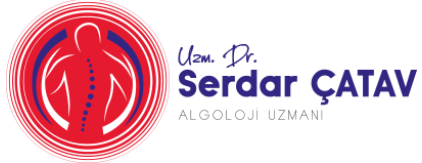Quadratus lumborum pain is caused by discomfort in the muscle deep in the lumbar region on either side of the spine. The quadratus lumborum muscle begins in the pelvis and extends to the lowest rib. It plays an important role in stabilizing the pelvis when a person stands upright. It also helps support the spine while breathing. The quadratus lumborum muscle is one of the primary sources of low back pain.
symptoms
Quadratus lumborum pain can limit daily activities. Quadratus lumborum pain symptoms include tension and discomfort in the lumbar region. The type and severity of pain can vary. Low back pain is often described as a deep ache, but it can also be felt as sharp and acute depending on the cause. Although the discomfort usually occurs at rest, it can get worse with movement. Lying, walking, standing, and rolling may aggravate the pain. Sharp pain may also be felt when sneezing or coughing. Quadratus lumborum pain can even interfere with daily activities such as walking and sitting.
Quadratus lumborum pain can become chronic. Long-term pain often impairs a person’s quality of life and well-being, and also affects physical. People with chronic low back pain are more likely to experience anxiety and depression than those without chronic pain.
Also, if one part of the body is causing pain, other parts try to support the painful area. For example, if the quadratus lumborum is tight and painful, we may find that the person begins to twist or change their gait by changing their body posture. This changing posture can place an additional load on other parts of the body, such as the hips, further increasing the pain.
Quadratus lumborum pain varies in severity. Pain can usually be managed successfully, especially if it is treated early when symptoms first begin. In some cases, it may take a long process to heal the muscle. However, using a combination of treatments leads to an improvement in symptoms for most people.
There are trigger points in quadratus lumborum syndrome. A trigger point is a sensitive area of muscle or connective tissue that hurts when stimulated or pressed. Trigger points are also often described as small knots. Pressing a trigger point can also cause directed or radiating pain. Radiating pain is the discomfort felt more in a different part of the body when the sensitive point is pressed. Quadratus lumborum trigger points can cause pain in the lower back, pelvis, and hips.
Causes
There are several potential causes of quadratus lumborum pain, including:
• Sitting for too long: Sitting for a long time causes the quadratus lumborum muscle to contract continuously. Constant contraction can cause muscle fatigue. If blood flow to the muscles is reduced, it can become stiff and painful.
• Poor posture: Poor posture while standing or sitting can put additional strain on the quadratus lumborum and cause pain. Slumping, leaning to one side, or sitting without back support can cause the muscle to become sore and tight.
• Weak muscles: If the muscles surrounding the quadratus lumborum are weak, it can cause other muscles to work harder than they should. When other muscles in the back and pelvic area are weak, the quadratus lumborum has to work harder to support the body. Eventually, the quadratus lumborum muscles may become tense.
• Uneven leg length: Irregular leg length can place additional strain on various muscles of the body, including the quadratus lumborum. If one leg is shorter than the other, the pelvis may be higher next to the longer leg. Tilting the pelvis can also lead to shortening of the quadratus lumborum, which can strain the muscles.
• Trauma: Like any muscle, the quadratus lumborum can be injured. Muscle trauma from a car accident or sports injury can cause quadratus lumborum pain. Common daily activities performed incorrectly can also cause injury. For example, awkward or improper lifting of heavy objects can strain the quadratus lumborum.
Treatment
Various treatments can help relieve quadratus lumborum pain. In some cases, home treatment can be effective. In other cases, a combination of home care and medical treatments may be needed to reduce discomfort.
Depending on the severity of the pain, the following treatments may help:
• Yoga: It includes a series of movements that can help reduce quadratus lumborum pain.Along with improving physical function, yoga can also improve mental well-being in people with ongoing back pain.
• Medications: Medications such as muscle relaxants and pain medications can help reduce quadratus lumborum pain.
• Trigger point injections: A trigger point injection involves applying the drug directly to the trigger point under ultrasound guidance to reduce sensitivity. The injection may be an anesthetic that numbs the area. In some cases, a steroid is injected to reduce inflammation. Trigger point injections can be effective for reducing muscle spasms and quadratus lumborum pain.
• Massage therapy: Massage therapy can be useful for treating quadratus lumborum pain. Massage can reduce muscle tension and increase blood flow to the area.
• Heat or ice: Applying ice to the area can reduce inflammation and heat can increase blood flow and reduce pain. A person can try alternating between heat and ice packs to relieve back pain. A warm bath can also help.
Precaution
Following some simple steps can prevent pain or help reduce discomfort if pain develops. Here are the steps a person can follow to deal with any pain they are experiencing:
• Practicing good posture while sitting and standing
• Using a lumbar support pillow while sitting
• Lifting objects by bending the knees, not by bending the waist.
• Maintaining a healthy weight
• Taking frequent breaks while sitting for long periods to avoid stiffness
• Avoiding sleeping on one side only




